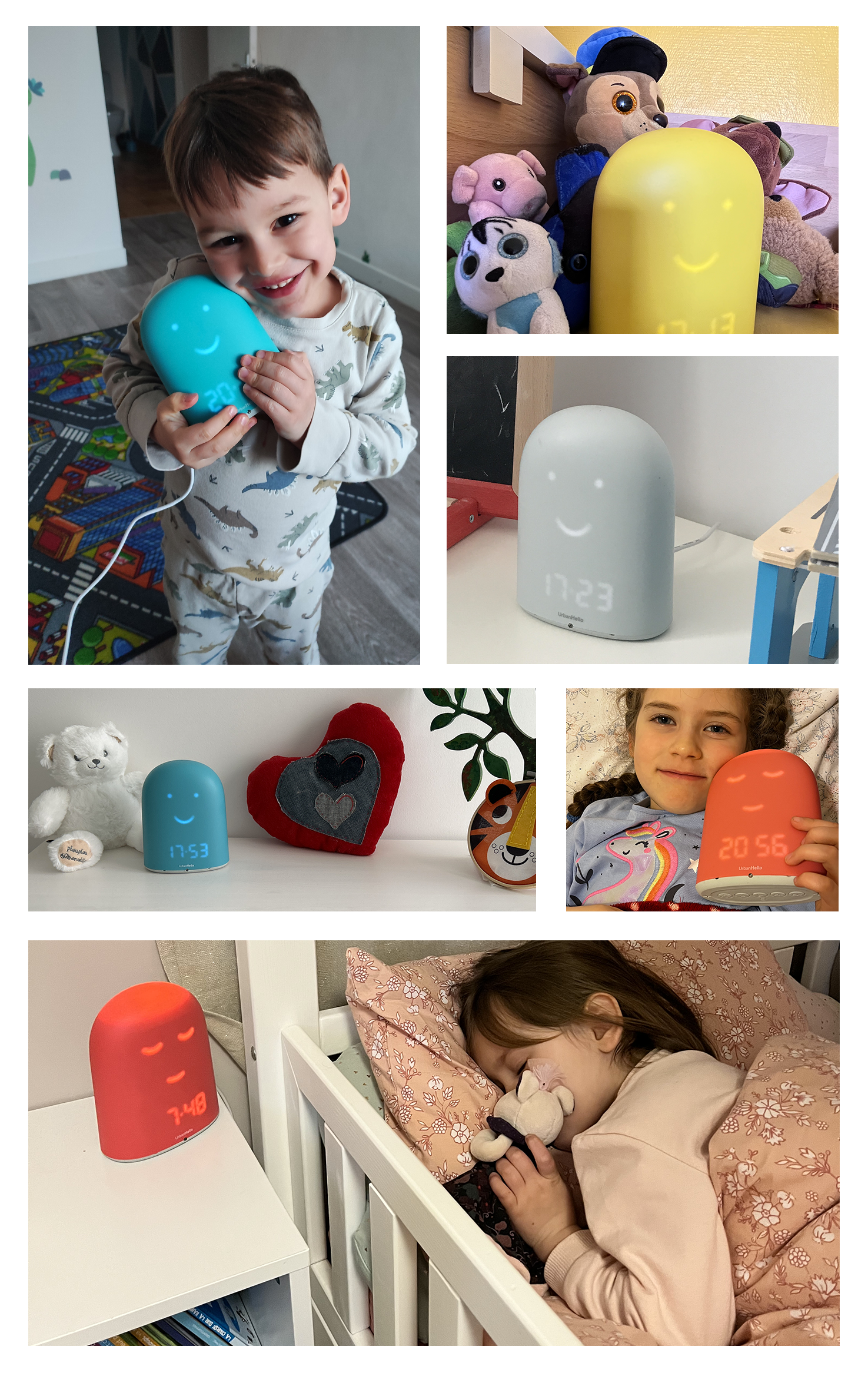Sleep Training your baby : tips and tricks !

Let’s be honest right away: there’s no magic formula to get your baby to sleep!
Sure, the internet is full of blog posts and articles promising miracle solutions to soothe your little one to sleep. And while there are helpful steps that can guide your baby into dreamland, it’s not quite that simple.
If you want your little angel to fall asleep peacefully in their crib, it’s time to reframe the question. The goal isn’t just to get baby to sleep, but to teach your baby how to sleep.
So the real question becomes: how can I help my baby learn to sleep well through the night?
By shifting the question, we also shift the parents’ role in their child’s sleep journey.
The aim isn’t to uncover a magical trick (spoiler: it doesn’t exist), but to gently support your child as they learn the essential steps for healthy, restful sleep.
So how do you create the right environment to help your baby become a great sleeper? You'll find that the real key ingredients are love and consistency.
Tip #1: Catch the Sleep Train!
If there’s one thing you should remember about how to get baby to sleep through the night, it’s this: pay close attention to your baby’s sleep cues!
As soon as your little one starts showing signs of tiredness, it’s time to head to bed. Yawning, rubbing eyes, or suddenly getting chilly are all signs that it’s time for sleep.
Of course, every baby is different, and only you can learn to spot your child’s unique signals. The key is to get them into bed as soon as that first sleep cycle is about to begin.
👉 First, this helps your baby connect what they feel with what they need to do! If you put them down too early, they may associate the crib with playtime. Too late, and they’ll link falling asleep to overtiredness instead of natural cues.
By getting the timing just right, you’re not only helping your baby sleep the amount they need—you’re also teaching them to develop a healthy sleep rhythm that aligns with their own feelings.
If these changes are occasional, they usually won’t affect your baby’s sleep in the long run.
But if the new rhythm sticks, your baby will likely adjust to it! Unpredictability can become a source of stress, and babies crave consistency and structure to feel safe. That’s why it’s so important to return to a regular bedtime routine as quickly as possible.
Tip #2: Establish a Bedtime Routine to Help Baby Sleep
As you’ve probably guessed by now, the secret to helping your baby sleep is consistency!
And there’s nothing more effective than creating a calming bedtime routine. It’s the perfect opportunity to share a special moment with your child and show them all the love and comfort they need. This time is just for the two of you!
Pick a few simple steps to follow every night: brush teeth, read a story or sing a lullaby, Mommy gives a goodnight kiss, then it’s Daddy’s turn! And make sure the bed where your baby falls asleep is the most peaceful, comfortable place possible.
If your little one senses that you feel confident about their sleep, they’ll sleep more peacefully. On the other hand, babies are surprisingly good at picking up on your stress or anxiety.
At this stage, babies don’t fear the dark—and with a comforting routine in place, there’s no reason they shouldn’t fall asleep smoothly as long as bedtime is well-timed. What matters most is that the routine stays consistent—and that it has a clear ending. When it ends, it’s time for sleep.
If you give in to a second story or one more lullaby, the routine loses its power. It’s the repetition of the steps that makes your baby feel safe and helps them learn how to get to sleep on their own. A bedtime routine isn’t a magic trick—but a series of gentle cues that let your little one know: it’s time to drift off to dreamland.

Tip #3: Be Mindful of the Restless Sleep Phase!
During the first 12 months, babies don’t yet distinguish between day and night. Their sleep works very differently from that of adults!
It’s made up of two very distinct phases: a period of restless sleep and a phase of quiet sleep.
These phases alternate throughout the night. Unlike adults, babies don’t fall asleep peacefully. In fact, most babies start their sleep cycle in a restless phase!
They may stretch, grunt, fuss, or even cry a little. Sometimes their face turns red or their eyes stay open. But this doesn’t mean they need you—they’re either falling asleep or still in a light sleep.
👉 The mistake here is assuming your baby is calling for you and taking them out of the crib. This could fully wake them up and disrupt their sleep cycle!
To avoid waking your baby unnecessarily, always wait a few short minutes before intervening if they seem restless. If they settle back down on their own, it means they’re still asleep. If their movements intensify, they’re likely waking up and ready for cuddles!
Likewise, if your baby is tired and starts grunting or kicking after being placed in the crib, chances are they’re simply drifting off to sleep.
This stage can be confusing for us adults, who are used to falling asleep calmly. But by resisting the urge to intervene too quickly, you avoid interrupting your baby’s sleep—and help prevent future sleep troubles!
Tip #4: Don’t Overlook Nap Time
A baby who sleeps well at night is also one who takes good naps during the day!
Just like with nighttime sleep, you need to watch for signs of tiredness. For newborns, naps usually follow a rhythm: one about two hours after waking, another two hours before lunch, and a third right after lunch. That post-lunch nap is the most important—it’s the one that tends to stick around as your baby grows.
Later in the afternoon, babies also need a final nap around 5 p.m. As your baby gets older, the goal is to recognize daytime sleep cues and offer nap time at roughly the same hour every day. It’s all about creating habits and maintaining consistency.
If your baby shows obvious signs of fatigue, there’s no question—time for a nap. If they don’t seem tired, offer one anyway. If they resist, allow them to rest quietly, but stay alert for any signs that sleep might follow. Naps should never be forced. Doing so not only risks turning the crib into a place of frustration, but can also create problems when it’s time to sleep at night!
Tip #5: Create a Sleep-Friendly Environment
Whether it’s for daytime naps or nighttime sleep, a calm, soothing environment is essential for helping your baby sleep well.
Your baby needs to feel safe and secure.
Melatonin, the sleep hormone, increases as the light fades. That’s why it helps to darken the room during naps—close the curtains or shutters. At night, opt for soft, dim lighting to gently signal bedtime.
Just as important, your baby needs to understand when it’s time to wind down. By lowering your voice and slowing down the household pace in the evening, you’re gently signaling that it’s time to go to sleep.
Babies thrive on consistency and predictability. These small but steady cues help them build a sense of security and love. And when they feel safe, all the right conditions are in place for a peaceful night’s sleep! You might try playing soft ambient music or offering a favorite comfort object to help ease the transition to bedtime.
In Conclusion:
If you're wondering how to get baby to sleep through the night, here’s what truly works every time:
Discover REMI
THE SMART BABY MONITOR 😊
REMI and its app bring together everything you need to manage your baby’s sleep!
Its mission? Helping families sleep better — from birth up to age 10.
I bought REMI for my 4-year-old son who didn’t want to sleep alone anymore after his little sister was born. Thanks to the remote wake-up system and bedtime stories I can play from a distance, the issue is completely resolved! I 100% recommend this purchase!






 My Child Won’t Sleep Alone: How to Help Them Gain Independence
My Child Won’t Sleep Alone: How to Help Them Gain Independence
 Letting Baby Cry It Out: Effective, But At What Cost?
Letting Baby Cry It Out: Effective, But At What Cost?
 White noise for baby : a scientific research !
White noise for baby : a scientific research !
 What are the positive effects of napping on memory?
What are the positive effects of napping on memory?
 What Time Should Your Child Go to Bed? The Ideal Bedtime by Age!
What Time Should Your Child Go to Bed? The Ideal Bedtime by Age!